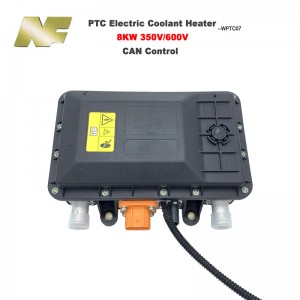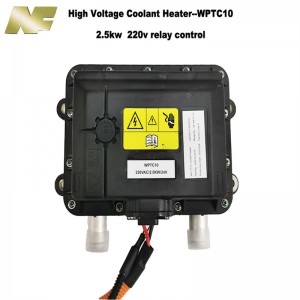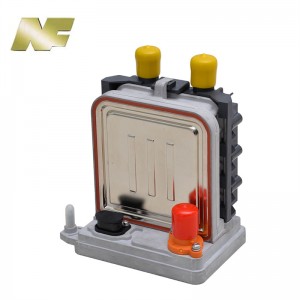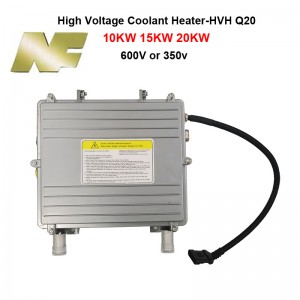In the field of advanced automotive technology, the integration of high-voltage components plays a crucial role for optimal performance and efficiency. The PTC (Positive Temperature Coefficient) coolant heater is one of the components that gets a lot of attention. This remarkable innovation revolutionized the way vehicles use energy, ensuring a comfortable driving experience even in extreme weather conditions. In this blog, we will explore the capabilities of PTC coolant heaters and highlight the benefits they bring, focusing on their high voltage counterparts, commonly known as high voltage (HV) coolant heaters.
Learn about PTC Coolant Heaters:
PTC coolant heaters are devices designed to heat engine coolant using the principle of electrical resistance heating. Positive temperature coefficient refers to the property of certain materials that the electrical resistance increases with increasing temperature. This feature allows the PTC heater to adapt to varying heat demands and stabilize its own temperature, while ensuring consistent and adjustable heat output.
Embrace High Voltage Technology:
High-voltage coolant heaters, also known as high-voltage coolant heaters, utilize the power of a high-pressure system to deliver greater performance and energy efficiency than their traditional low-voltage counterparts. High voltage coolant heaters are capable of operating at over 300 volts, providing superior power output and improved response times, making them ideal for modern vehicles with increasing energy demands.
Energy efficiency and environmental benefits:
The high-voltage coolant heater is designed to maximize energy efficiency and reduce the vehicle's overall power consumption. By transferring heat quickly and efficiently, they help shorten engine warm-up times, reduce fuel consumption and minimize harmful exhaust emissions. In addition, these heaters enable efficient heat distribution throughout the cabin, ensuring passenger comfort while minimizing energy waste.
Flexible functions:
One of the outstanding features of PTC coolant heaters, including HV coolant heaters, is their ability to provide a variety of operating functions. These heaters can be integrated with various powertrain configurations, including electric, hybrid and conventional engines, for a wide variety of vehicle types and models. The flexibility of the high-voltage coolant heater extends to compatibility with different energy sources, including battery power, on-board generators, and renewable energy systems, further enhancing its potential for a wide range of applications.
Reliability and Security:
Safety is the number one consideration for all automotive components, and PTC coolant heaters excel in this regard. With integrated control systems and advanced monitoring mechanisms, they ensure safe and efficient operation. In addition, the high-voltage coolant heater is equipped with protection measures such as current, voltage and temperature control to prevent overheating or potential failure. These safety features help improve the overall reliability and lifespan of the heater while providing peace of mind for vehicle owners and manufacturers.
The role of PTC coolant heaters in electrification:
With the major shift towards electrification in the automotive industry, PTC coolant heaters, especially high voltage coolant heaters, are an indispensable component. They play a vital role in supporting the transition from conventional internal combustion engines to electric and hybrid vehicles, providing the necessary heating without compromising energy efficiency. By integrating PTC coolant heaters into electric or hybrid platforms, manufacturers can optimize energy utilization and enhance the overall driving experience.
in conclusion:
The implementation of PTC coolant heaters, especially HV coolant heaters, has revolutionized the way vehicles regulate temperature, ensuring energy efficiency and improving passenger comfort. With their impressive power capabilities, adaptability and safety features, high voltage coolant heaters are the future of automotive heating systems. As the industry continues to grow, the adoption of high voltage technology is not only necessary, but also a step towards sustainable and environmentally friendly mobility.





Post time: Aug-08-2023




